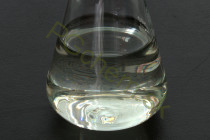Sodium chlorite, 24,5% NaClO2 - ( 500 g )
| Availability: | In stock | |
| Quantity: | x 1 ks | |
| Price with VAT: | 6,50 € ( 5,42 € without VAT ) | |
Product name
Sodium chlorite 24,5% - NaClO2Information
It is very good fuller paper application you found in industry and households. Sodium chlorite has the advantage that trihalomethanes are not formed from organic contaminants.
Sodium chlorite should, like many other oxidizing agents, protect against unwanted contamination by organic material to avoid forming an explosive mixture.
Usage
Bleaching paper and textiles, disinfection.Specification
Sodium chlorite (NaClO2) Min. 300 g / l / min. 24.5%Sodium nitrate (NaNO3) Max. 0.03%
Sodium chlorate (NaClO3) Max. 0.45%
Arsenic (As) Max. 0.1 mg / kg of 25% sodium chlorite
Chromium (Cr) Max. 0.1 mg / kg of 25% sodium chlorite
Mercury (Hg) Max. 0.1 mg / kg of 25% sodium chlorite
Nickel (Ni) Max. 0.1 mg / kg of 25% sodium chlorite
Lead (Pb) Max. 0.1 mg / kg of 25% sodium chlorite
Antimony (Sb) Max. 0.1 mg / kg of 25% sodium chlorite
Selenium (Se) Max. 0.1 mg / kg of 25% sodium chlorite
Density of 1.21 g/cm3 (20°C)
PH (H2O) data available
Boiling point 100°C
CAS: 7758-19-2
ES: 231-836-6Appearance: colorless - yellowish liquid
Odor: odorless
pH: 11 - 12 (100 g/l H2O)
Melting point: 180 - 200 °C (decomposition)
Freezing point: -10 °C (25% solution)
Toxicological information
Rat LD50 1136 mg/kgStorage
Do not expose to direct sunlight or ultraviolet light. Protect product from freezing. Avoid contact with incompatible materials. Store in a cool, dry location in closed containers.
UPOZORNENIE:





Hazards: Oxidising, Harmful - organ damage, eye damage, highly toxic to the environment
H271 May cause fire or explosion; powerful oxidant.
H302 Harmful if swallowed.
H318 Causes severe eye damage.
H373 May cause damage to organs through prolonged or repeated exposure.
H400 Very toxic to aquatic organisms.
EUH032: Contact with acids liberates very toxic gas.
P305 + P351 + P338: After eye contact: A few minutes Rinse cautiously with water. If you wear contact lenses, if possible, remove them. Continue rinsing.
P313: Get medical advice / attention.


